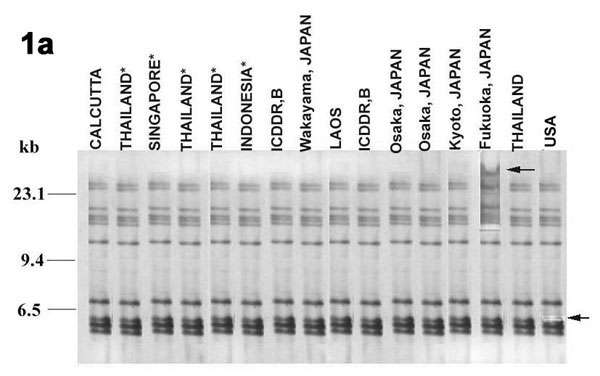Volume 6, Number 6—December 2000
Research
Molecular Evidence of Clonal Vibrio parahaemolyticus Pandemic Strains
Figure 1

Figure 1. Southern blot hybridization of BglI-digested Vibrio parahaemolyticus chromosomal DNA with rRNA probe. 1a-1c, ribotype patterns of the O3:K6, O4:K68, and O1:K untypeable (KUT) strains, respectively, isolated from different countries. 1d, ribotype pattern of the nonpandemic strains isolated from different countries and belonging to various serotypes (Table 2). The last three lanes indicate the pattern of the representative O3:K6(KX-V225), O4:K68(KX-V563), and O1:KUT(KX-V737) strains, respectively. Positions of λ-HindIII molecular-size markers run on the same gel are indicated on the left margin. *=Strains isolated from travelers to the Kansai Airport from the respective places.
Page created: December 17, 2010
Page updated: December 17, 2010
Page reviewed: December 17, 2010
The conclusions, findings, and opinions expressed by authors contributing to this journal do not necessarily reflect the official position of the U.S. Department of Health and Human Services, the Public Health Service, the Centers for Disease Control and Prevention, or the authors' affiliated institutions. Use of trade names is for identification only and does not imply endorsement by any of the groups named above.